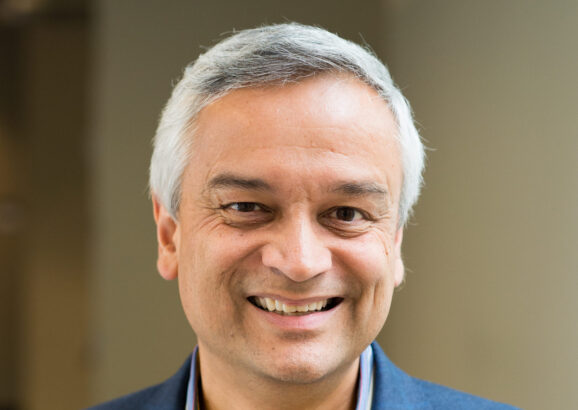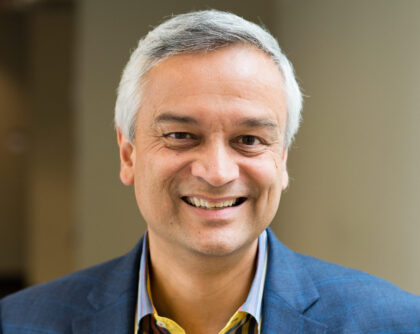Krishna Rajagopal
Research Interests
Professor Rajagopal enjoys thinking about QCD at high enough temperature and/or density, where various phases of matter in which the quarks and gluons do not coalesce into hadrons or nuclei are found, because understanding these liquids requires linking particle and nuclear physics, cosmology, astrophysics and condensed matter physics. Heavy ion collision experiments at the Relativistic Heavy Ion Collider (RHIC) and the Large Hadron Collider (LHC) recreate droplets of the hot quark-gluon plasma that filled the microseconds-old universe and show that it is a strongly coupled liquid. Understanding the properties of this new phase of matter and how it emerges from QCD is a central challenge for the coming decade. Professor Rajagopal is incorporating insights obtained via gauge/string duality, perturbative QCD methods, and hydrodynamics in modeling how jets produced in heavy ion collisions are modified via their passage through liquid quark-gluon plasma (QGP) and how the wakes they leave behind in the droplet of liquid relax and evolve, discerning the most effective ways to use measurements of how the substructure of jets gets modified as individual quarks and gluons within them scatter off individual quarks and gluons from the QGP to gain an understanding of the microscopic structure of this strongly coupled liquid. His work provides a new framework for understanding how this liquid forms and hydrodynamizes so remarkably quickly as well as a new, and universal, description of how heavy quarks shooting through it lose energy and equilibrate. The longer term challenge is to use the data to gain an understanding of how a strongly coupled liquid, which shows no signs of the individual particles of which it is made, can emerge from QCD. This quest resonates with challenges that are central to contemporary condensed matter physics.
Professor Rajagopal has also analyzed the critical point in the QCD phase diagram and the interplay of hydrodynamics and fluctuations near it. He has proposed signatures for its experimental detection, showing how to use data from the collision-energy scan at RHIC and, later this decade, from the CBM experiment in Germany to search for the critical point in a large region of the QCD phase diagram. He has also recently shown how astrophysical observations of neutron stars and neutron star mergers, in concert with ab initio high density QCD calculations, provide empirical constraints on the strength of color superconducting pairing in dense quark matter.
Courtesy of MITx Videos | YouTube
Biographical Sketch
After growing up in Toronto, Professor Rajagopal did his undergraduate work at Queen’s University in Kingston, Canada. He obtained his doctorate at Princeton University in 1993 and spent three years at Harvard as a Junior Fellow. He then spent one year at Caltech before coming to MIT in 1997. He became the Associate Head of the Department of Physics in 2009, served as the Chair of the MIT faculty from 2015 to 2017 and as MIT’s Dean for Digital Learning from 2017 to 2021.

Awards & Honors
- 2025 // Arthur C. Smith Award "for meaningful contributions and devotion to undergraduate student life and learning at MIT."
- 2023 // Buechner Award for Undergraduate Advising (MIT)
- 2021 // Office of the First Year Student Champion Award
- 2017 // Outstanding UROP Faculty Mentor Award (MIT)
- 2011 // Everett Moore Baker Award for Excellence in Undergraduate Teaching (MIT)
- 2010 // Margaret MacVicar Faculty Fellow (MIT)
- 2004 // American Physical Society Fellow "for seminal contributions to the theory of dense matter, including color-flavor-locked and crystalline phases of color-superconducting quark matter, and critical phenomena in heavy ion collisions."
- 1999 // Buechner Prize for Excellence in Teaching (MIT)
- 1998 // Sloan Research Fellowship
